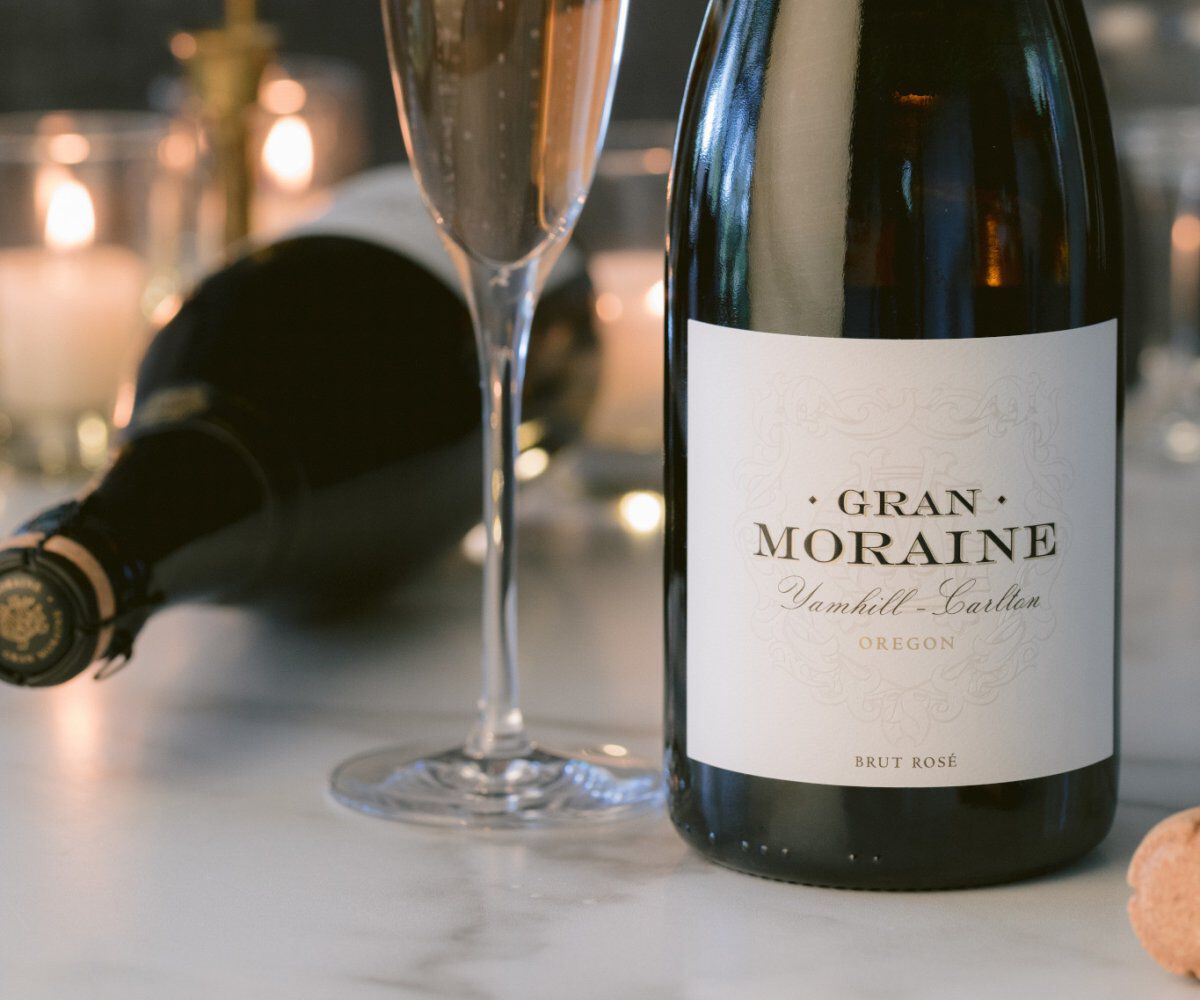Champagne vs. Sparkling Wines Explained: What is the Difference?
Published: June 15, 2022
The king of bubblies, Champagne, is produced using the traditional method, also called la méthode champenoise. A sparkling wine can only be called Champagne if it comes from the Champagne region in France—as the French like to say, le Champagne (the drink) only comes from la Champagne (the region).
But what about other types of sparkling wines, such as Cava and Prosecco? How do they differ from Champagne?
The fastest way to make your way through the array of sparkling wines in a store or online is to know how they are made. Let’s focus on the main two — the traditional and tank methods.
Bur First, is Sparkling Wine the Same as Champagne?
Let’s clear up one of the biggest misconceptions in the world of bubbly: all Champagne is sparkling wine, but not all sparkling wine is Champagne. Think of Champagne as a VIP member of the sparkling wine club—it has to meet very specific criteria to earn that title.
First, Champagne must come from the Champagne region of France (yes, it’s a place, not just a fancy word!). Second, it’s made using the traditional method (or méthode champenoise), which involves a meticulous process of bottle fermentation and aging. This is what gives Champagne those luxurious toasty, nutty, and brioche-like flavors that make it so iconic.
On the other hand, sparkling wine is a broader category that includes bubbly made all over the world using different methods. For example:
- Prosecco from Italy is made using the tank method, giving it fresh and fruity flavors.
- Cava from Spain is produced with the traditional method, but often at a more affordable price.
- Crémant from France follows the same method as Champagne but comes from regions like Burgundy or Alsace.
- Lambrusco is a sparkling red wine from Italy that’s totally different but equally fun to sip.
So, while Champagne is undoubtedly the most famous sparkling wine, it’s just one player in a diverse and delightful category.

What is the Traditional Method? (Secondary Fermentation in Bottle)
While Champagne can only come from la Champagne, elsewhere in France, traditional method sparklers are called Crémants, followed by the name of the region—such as Crémant de Bourgogne, Crémant d’Alsace or Crémant de Loire. Beyond France, producers use the traditional method to make Spanish Cava, Italian Franciacorta, South African Cap Classique and Australian sparkling Shiraz. Keep an eye out for these traditionally produced, non-Champagne sparklers as they can offer an incredible value for the price.
What is the traditional method? Champagne and other bubblies made this way start out as a cuvée—a blend of still wines that have undergone a primary fermentation in tank or barrel. The blended wine is then transferred to bottles, where a mixture of wine, yeasts and sugar (liqueur de tirage) is added to kickstart a second fermentation.
The bottle is temporarily sealed with a crown cap, trapping in the CO2 that is created when the yeast eats the sugar. At this point, the magic happens. Still wine transforms into sparkling in what is aptly called la prise de mousse, or the “capturing of the sparkle.”
Eventually, the yeasts decompose and form a deposit in the bottle, known as the lees. The now sparkling wine is aged on the lees (sur lie), anywhere from 15 months to decades for the best Champagnes, during which time the lees impart wonderful, fresh-baked bread notes and a creamy texture to the wine. Note that the aging requirements for non-Champagne sparkling wines are much shorter—one reason these wines are less expensive than Champagne.
During the sur lie aging period, the bottles are suspended upside down and occasionally rotated or “riddled” to force the lees into the bottle neck. While automated riddling is much more common today, some Champagne houses still rely on professional riddlers, who defy carpal tunnel syndrome by turning up to 40,000 bottles a day!
Once the lees have settled into the neck, the bottles are dipped into a refrigerated solution to freeze the sediment, which shoots out of the bottle when the crown cap is removed—a step called dégorgement. As the final step, the winemaker adds a mixture of sugar and wine (dosage or liqueur d’expédition), which will determine the wine’s final sweetness. The bottle is then sealed with a cork and wire cage and returned to the cellar for additional aging.
Traditional method bubblies can exhibit a surprising range of aromas and flavors, from fresh fruit and flowers to pastry, toast, nuts and dried fruit. The key factors at play here are the wines chosen for the base cuvée and whether malolactic fermentation is used—the process of converting sharp, malic acids (think apple) into soft, lactic acids (think butter and cream). The longer the wine is aged on the lees, the more complex its flavor will also be.

What is the Tank Method? (Secondary Fermentation in Tank)
Sparkling wines made using the less expensive tank method, also called the Charmat Method, include Italian Prosecco, Lambrusco and Asti Spumante, and most German Sekt.
The tank method starts out like the traditional method with a blend of wines, but the second fermentation takes place in a pressure-controlled tank instead of in bottles. The liqueur de tirage is added to the tank, which traps the CO2 that is created when the yeast consumes the sugar. Sound familiar? Unlike the traditional method, however, there is no aging on the lees. The sparkling wine is filtered, and a dosage can be added before being bottled.
Because tank method sparklers have less contact with the lees, they are more apt to show pure, fresh fruit flavors and exude clean, bright aromas.
What Makes Champagne So Special?
It’s no secret that Champagne has a bit of a reputation—it’s the drink of celebrations, toasts, and luxury. But what sets it apart? Besides the exclusivity of its region, Champagne’s uniqueness lies in the traditional method of production, its long aging process, and its complex flavors. Those brioche and toasty notes? That’s the magic of time and meticulous craftsmanship. Plus, the strict regulations on how Champagne is made ensure that every bottle meets high standards. So, when you’re sipping Champagne, you’re tasting centuries of tradition, innovation, and attention to detail.
Is Prosecco the Same as Champagne?
Ah, the million-dollar question. In short—no, but that doesn’t make Prosecco any less fabulous! Prosecco hails from Italy and is made using the tank method, which skips the long aging process Champagne goes through. This means Prosecco tends to have fresh, fruity, and floral notes, making it light, easy to drink, and oh-so-affordable. It’s perfect for brunches, mimosas, and any occasion that doesn’t require popping a $60+ bottle. Think of Prosecco as Champagne’s fun, laid-back cousin who always brings good vibes to the party.

How to Pick the Right Sparkling Wine for the Occasion
Feeling overwhelmed by all the bubbly options? Don’t stress—it’s easier than you think! Here’s a quick guide:
- For celebrations or formal events: Go for Champagne or another traditional method sparkling wine, like Crémant or Cava. They bring that “wow” factor with their complexity and elegance.
- For casual gatherings or brunch: Prosecco or Moscato d’Asti is perfect. Their bright, fruity flavors and approachable price points make them crowd-pleasers.
- For adventurous wine drinkers: Look for Franciacorta from Italy, South African Cap Classique, or sparkling Shiraz from Australia. They’re a little off the beaten path but deliver serious flavor.
- For gifts: A bottle of Champagne or a high-quality Prosecco is always a safe bet. If you know the recipient loves wine, a grower Champagne adds a thoughtful, unique touch.
The key is to match the wine’s vibe to the occasion. But honestly? There’s no wrong choice when it comes to bubbles—pop what makes you happy!
Learn Sparkling Wine Terms
- Sweetness – This is determined by the dosage and its grams of sugar/liter
- Doux = +50 grams
- Demi-Sec = 32-50 grams
- Sec = 17-32 grams
- Extra Dry = 12-17 grams
- Brut = 0-12 grams
- Extra Brut = 0-6 grams
- Brut Nature = 0-3 grams
- Vintage vs. Non-Vintage – If the base cuvée consists of still wines made from different harvest years, the Champagne is considered non-vintage (NV) or multi-vintage (MV). Conversely, a base cuvée made from a single, exceptional harvest will become a vintage Champagne.
- Grower Champagne – The grape growers, who traditionally supply the big houses, will sometimes make their own Champagne, which can offer fantastic quality at a much lower price point.
- Fizz – This is determined by the amount of pressure inside the bottle:
- Mousseux, Crémant, Espumoso, Spumante, Sekt are fully sparkling wines
- Pétillant, Frizzante, Spritzig are lightly sparkling wines
- Blanc de Blancs – Champagne/sparkling wine made from only white grapes
- Blanc de Noirs – Champagne/sparkling wine made from only red grapes
- Rosé Champagne/Sparkling – Champagne/sparkling wine made through the saignée method (10-15% of the juice is saignée or “bled” from red grapes after 24-72 hours of extended maceration and made into wine); or through simply blending red and white wines in the cuvée.
Shop Sparkling Wine on YourWineStore
Ready to add some sparkle to your next celebration or cozy gathering? At YourWineStore, we offer a wide selection of Champagne, Prosecco, Cava, and other sparkling wines, perfect for every occasion. Whether you're a Champagne connoisseur or new to bubbly, our collection has something for every taste and budget. Plus, with the convenience of buying wine online, you can easily explore, discover, and order your favorites from the comfort of home. Shop now at our online wine store and get your hands on top-notch sparkling wines that are sure to impress. Cheers to bubbles and convenience!






